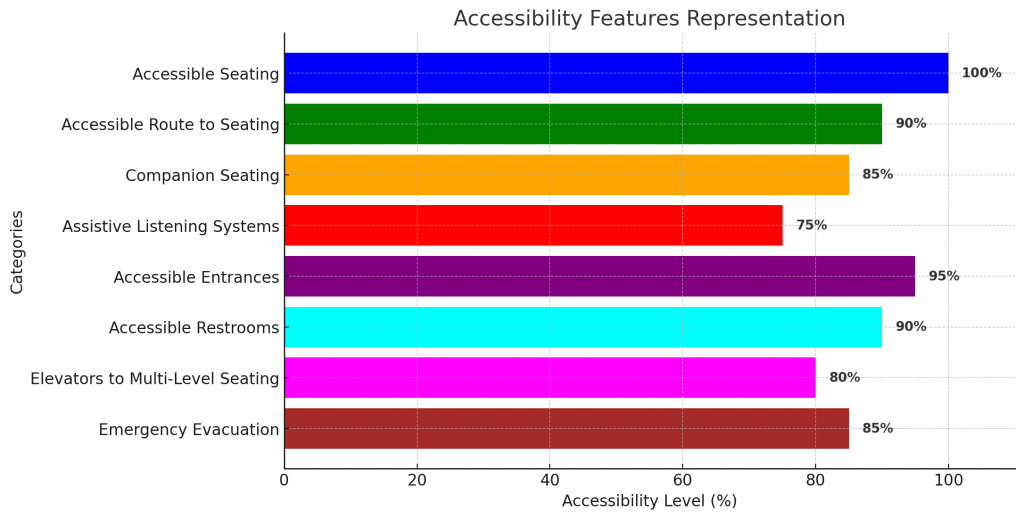| Accessible Seating | 🔹 Minimum number of wheelchair spaces required based on total seating capacity (2018 IBC: Table 1108.2.2.1).
🔹 Distribution across various viewing angles (not clustered). | 🔹 Barrier-free law (バリアフリー法) mandates accessible seating in theaters, cinemas, and concert halls.
🔹 The Act on Promotion of Smooth Transportation (交通バリアフリー法) requires accessible seats in public assembly spaces. |
| Accessible Routes to Seating | 🔹 At least one accessible route (ADA/IBC 1104.1) from entrance to all wheelchair spaces. | 🔹 Barrier-free Building Design Standards (バリアフリー建築設計基準) mandate step-free pathways to accessible seating. |
| Companion Seating | 🔹 Companion seats must be provided adjacent to each wheelchair space. | 🔹 Not explicitly required, but many modern theaters provide companion seating per local guidelines. |
| Assistive Listening Systems | 🔹 Required for assembly areas with audio amplification (IBC 1108.2.7 & ADA 219). | 🔹 Required under バリアフリー法, with specific guidance in public theaters and cinemas. |
| Accessible Entrances | 🔹 At least 60% of public entrances must be accessible (IBC 1105.1).
🔹 Power-assisted doors recommended in high-occupancy venues. | 🔹 Barrier-free Act mandates at least one accessible entrance in large theaters. |
| Accessible Restrooms | 🔹 Required on each floor with public seating (IBC 1109.2).
🔹 Clear floor space for wheelchair turning radius required (ADA 603.2). | 🔹 Barrier-Free Guidelines require accessible toilets near seating areas in public assembly buildings. |
| Elevators for Multi-Level Seating | 🔹 Required for multi-level seating arrangements unless a ramp is provided (IBC 1104.4). | 🔹 Mandatory for multi-level venues with alternative evacuation options for disabled persons. |
| Emergency Evacuation for Disabled Persons | 🔹 Areas of refuge required in multi-story buildings unless the building has an automatic sprinkler system (IBC 1009.6).
🔹 Evacuation elevators allowed with backup power and fire-resistant lobbies. | 🔹 Fireproof refuge areas required for high-rise theaters and concert halls (消防法, Fire Service Act). |


